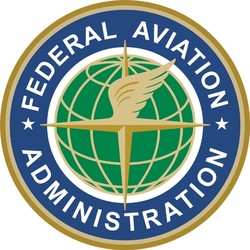Tue, Aug 26, 2014
Meetings Planned With FAA To Develop Advisory Circulars
HAI, along with the Association of Air Medical Services (AAMS) and the Air Medical Operators Association (AMOA), are continuing their work with the FAA to ensure that helicopter air ambulance operators have the information they need to comply with the helicopter safety rule issued earlier this year — often known as the HEMS rule.

The three associations are planning meetings with the agency in the coming weeks to develop advisory circulars and other guidance to help operators comply with the multi-year roll-out of the new rule.
Earlier this summer, as a result of pointed input from the three associations, the FAA issued a direct final rule and three technical corrections to the safety rule, which itself was issued in late February. The changes reflect industry’s input, and enhance safety.
The direct final rule modifies 14 CFR 135.611, a new section that was added as part of the helicopter safety rule, to allow helicopter air ambulance (HAA) pilots to “assess the weather at a departure point where current weather observations are not available and to depart if the pilot's observed ceiling and visibility is greater than certain weather minimums. This change to the current regulation will permit helicopter air ambulance flights to enter the National Airspace System under instrument flight rules (IFR) when visibilities and ceilings are below visual flight rules (VFR) based on pilot weather observations, thus increasing the safety of the flight.”
Had the FAA not taken this action, pilots would have been unable to depart IFR from landing sites without weather reporting — which would likely include most of the incident sites they would be departing from — until VFR conditions existed. It allows HAA pilots operating in low visibility to take full advantage of air traffic separation services.
In addition, the FAA made technical corrections the sections 91.155, 135.609, and 135.621.
- The change to 91.155 removes duplicative text and clarifies a table included in the section, but does not change the intent of the Final Rule.
- The change to 135.609 clarifies that weather minimums outlined in the part only apply to VFR operations.
- The change to 135.621 eases the burden for operators with regard to required briefings for medical non-flight personnel.
HAI, AAMS, and AMOA continue to have regular contact with the FAA as the agency develops the guidance necessary for HAA operators to comply with the new rules and enhance safe air ambulance operations.
More News
Also: Kodiak 100 Joins USFS, Innovative Solutions & Support Renamed, Gulfstream Selects Honeywell, Special Olympics Airlift The Phantom 3500 mockup made an appearance where the>[...]
Incidents Allegedly Occured As Described in Police Report(s) 25-005809 and 25-005818 The name ’Dan Gryder’ is fairly well known to many in aviation.... Whether you like>[...]
“Recent U.S. government policy updates emphasizing investment in domestic drone manufacturing align perfectly with our joint venture objectives, positioning us to meet critic>[...]
Final Approach Point The point, applicable only to a nonprecision approach with no depicted FAF (such as an on airport VOR), where the aircraft is established inbound on the final >[...]
From 2023 (YouTube Edition): The Best of the Eighties in the Early Twenties It can be argued with confidence that the father of the Ultralight aircraft from which the Light-Sport A>[...]
 Airborne 10.15.25: Phantom 3500 Confounds, Citation CJ3 Gen2 TC, True Blue Power
Airborne 10.15.25: Phantom 3500 Confounds, Citation CJ3 Gen2 TC, True Blue Power Updated: Gryder Arrested On Gun Charge, Cites Georgia Stand Your Ground Law
Updated: Gryder Arrested On Gun Charge, Cites Georgia Stand Your Ground Law Aero-News: Quote of the Day (10.18.25)
Aero-News: Quote of the Day (10.18.25) ANN's Daily Aero-Term (10.18.25): Final Approach Point
ANN's Daily Aero-Term (10.18.25): Final Approach Point Classic Aero-TV: Eyeing the Hawk
Classic Aero-TV: Eyeing the Hawk



